UK Location (INSPIRE)
Type of resources
Available actions
Topics
Keywords
Contact for the resource
Provided by
Years
Formats
Representation types
Update frequencies
Service types
Scale
Resolution
-

**Now superceded by Geoscience Imagebase**Digital index to the British Association for the Advancement of Science (BAAS) Geological Photographs. This collection of around 8,000 photographs dating between 1861 and 1948 is held in the BGS Library on deposit from the BAAS. The Irish photographs are held in the Ulster Museum in Belfast.
-
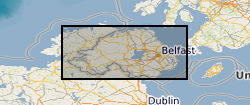
The 1:250k Geological Maps of Northern Ireland comprise the Superficial Deposits Map (Drift, 1991) and the Bedrock Map (Solid Geology, 1997). These maps identify landscape areas based on their lithology. The scale of the maps is 1:250 000 and provides a simplified interpretation of the geology that may be used as a guide at a regional level, but should not be relied on for local geology. Superficial deposits are younger geological deposits formed during the most recent geological time; the Quaternary. These deposits rest on older rocks or deposits referred to as bedrock. The superficial deposits theme defines landscape areas with a geological name and their deposit-type or lithological composition. The Superficial map shows the deposits within the extent of the six Counties of Northern Ireland. The Bedrock map comprises the bedrock geology and contains dykes and geological faults. Bedrock geology describes the main mass of solid rocks forming the earth's crust. Bedrock is present everywhere, whether exposed at surface in outcrops or concealed beneath superficial deposits or water bodies. Geological names are based on the lithostratigraphic or lithodemic hierarchy of the rocks. The lithostratigraphic scheme arranges rock bodies into units based on rock-type and geological time of formation. Where rock-types do not fit into the lithostratigraphic scheme, for example intrusive, deformed rocks subjected to heat and pressure resulting in new or changed rock types; then their classification is based on their rock-type or lithological composition. This assesses visible features such as texture, structure, mineralogy. Dykes defines small, narrow areas of a specific type of bedrock geology; that is igneous rocks which have been intruded into the landscape at a later date than the surrounding bedrock. Geological faults occur where a body of bedrock has been fractured and displaced by large scale processes affecting the earth's crust (tectonic forces). The Bedrock map shows the main bedrock geological divisions in Northern Ireland and coverage extends to the west into the Republic of Ireland. The printed map includes a stratigraphic column. Digital datasets have been derived from the maps and comprise three layers. 1. Superficial polygons, 2. Bedrock polygons and 3. Linear features. Attribute tables describe the polygon features. These data are generalised and superseded by the 1:10k Geological Maps of Northern Ireland.
-
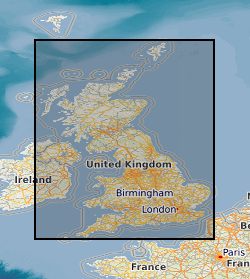
The GeoSure datasets and related reports from the British Geological Survey provide information about potential ground movement due to six types of natural geological hazard, in a helpful and user-friendly format. The reports can help inform planning decisions and indicate causes of subsidence. The Collapsible Ground dataset provides an assessment of the potential for a geological deposit to collapse (to subside rapidly) as a consequence of a metastable microfabric in loessic material. Such metastable material is prone to collapse when it is loaded (as by construction of a building, for example) and then saturated by water (as by rising groundwater, for example). Collapse may cause damage to overlying property. The methodology is based on BGS DiGMapGB-50 (Digital Map) and expert knowledge of the origin and behaviour of the formations so defined. It provides complete coverage of Great Britain, subject to revision in line with changes in DiGMapGB lithology codes and methodological improvements. The storage formats of the data are ESRI and MapInfo but other formats can be supplied.
-

Digital index to the availability of published medium scale geological maps at 1:50000 scale and 1:63360 scale (one inch to one mile) produced by the Survey. The index was set up in the 1980's and currently contains some 1100 entries covering the whole of Great Britain. Entries for all registered maps but not all fields are complete for all entries.
-

Photographic negatives of Geological map 'Standards', manuscript and published maps produced by the Survey on County Series (1:10560) and National Grid (1:10560 & 1:10000) Ordnance Survey base maps. Current holdings over 41,000 maps for Great Britain. The majority of maps were scanned in 2004, any new maps produced are scanned and added to the collection. This is essentially a back up collection for disaster recovery.
-

BGS ran a series of Rubidium Vapour magnetometer stations, mainly in the UK, but also overseas. Data is held on 3 batches of CDs. The largest batch consists of 20CDs containing data from 1977 to 1984. The second batch contains a duplicate of the 1980 data, but also contains documentation and software to read the data files. The final batch is a single CD holding data from 1976 (a time when the stations were being set up). Data was sampled at 2.5sec intervals.
-
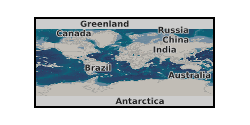
The aa index is a simple global geomagnetic activity index, with units of 1 nT (nanotesla), which is produced from the K indices from two approximately antipodal observatories. At present these are Hartland observatory in the UK and Canberra observatory in Australia. The main advantage in using aa indices for research purposes is that the time series spans further back (to 1868) than any of the other planetary indices time series.Also, up to date values are produced and made available weekly, giving nearer to real time availability than any other planetary index. In between the weekly updates, BGS calculates estimated aa indices, providing real time "nowcasts" which are updated on an hourly basis. These estimates are clearly marked with the letters "Est". Although calculated by the same method, the aa indices available on this service are not the definitive values. These are published by the International Service for Geomagnetic Indices, CRPE/CNET - CNRS, 4 Avenue de Neptune, F-94107 Saint Maur, Cedex, France.
-

A list of the laboratory reports produced from testing in the engineering geology laboratory. It includes report number, title and author's name(s). The reports themselves contain data on a wide range of geotechnical and geophysical laboratory tests, from standard and index tests to complex research. Test materials are highly varied, soils and rock, from the UK or overseas.
-
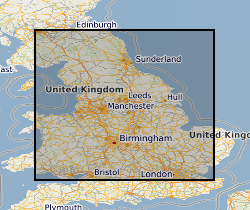
Soil samples collected in urban areas throughout the UK are analysed for their major and trace element geochemistry, their pH and organic matter content. Samples are collected at two depths; 0-15cm and 35-45cm at sites selected using a stratified, random design. The data can be used to identify and prioritize contaminated sites. In 1993, the Geochemical Baseline Survey Of The Environm (G-BASE) rural geochemical mapping programme was extended to include sampling in urban areas and to date around 22 urban centres have been sampled. Data is available on key inorganic contaminants including Cr, Cu, Cd, Ni, As, Pb, Zn, Sn and Sb. Results have been standardised to ensure seamless joins between geochemical sampling campaigns. Urban centres are selected in areas where rural sampling is undertaken or where the BGS urban programme is active. Urban centres will continue to be sampled until completion of the rural programme, scheduled for 2015.
-
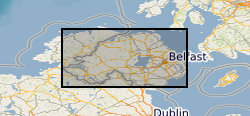
The joint PHE-GSNI-BGS digital Indicative Atlas of Radon in Northern Ireland presents an overview of the results of detailed mapping of radon potential, defined as the estimated percentage of homes in an area above the radon Action Level. The Indicative Atlas of Radon in Northern Ireland presents a simplified version of the Radon Potential Dataset for Northern Ireland, with each 1-km grid square being classed according to the highest radon potential found within it, so is indicative rather than definitive. The Radon Potential Dataset for Northern Ireland provides the current definitive map of radon Affected Areas in Northern Ireland. The Indicative Atlas of Radon in Northern Ireland is published in Z Daraktchieva, J D Appleton, D M Rees, K A M Adlam, A H Myers, S A Hodgson, N P McColl, G R Wasson and L J Peake, 2015. Indicative Atlas of Radon in Northern Ireland. PHE-CRCE-017, 22 pp. Radon is a natural radioactive gas, which enters buildings from the ground. Exposure to high concentrations increases the risk of lung cancer. Public Health England (PHE) recommends that radon levels should be reduced in homes where the annual average exceed 200 becquerels per cubic metre (200 Bq m-3), the radon Action Level. Public Health England defines radon Affected Areas as those with 1% chance or more of a house having a radon concentration exceeding the Action Level.
 NERC Data Catalogue Service
NERC Data Catalogue Service